In astronomy and navigation, the celestial sphere is an abstract sphere that has an arbitrarily large radius and is concentric to Earth. All objects in the sky can be conceived as being projected upon the inner surface of the celestial sphere, which may be centered on Earth or the observer. If centered on the observer, half of the sphere would resemble a hemispherical screen over the observing location.
The celestial sphere is a practical tool for spherical astronomy, allowing astronomers to specify the apparent positions of objects in the sky if their distances are unknown or irrelevant. In the equatorial coordinate system, the celestial equator divides the celestial sphere into two halves: the northern and southern celestial hemispheres.
https://en.wikipedia.org/wiki/Celestial_sphere
In astronomy, the hour circle, which together with declination and distance (from the planet's centre of mass) determines the location of any celestial object, is the great circle through the object and the two celestial poles.[1] As such, it is a higher concept than the meridian as defined in astronomy, which takes account of the terrain and depth to the centre of Earth at a ground observer's location. The hour circles, specifically, are perfect circles perpendicular (at right angles) to the celestial equator. By contrast, the declination of an object viewed on the celestial sphere is the angle of that object to/from the celestial equator (thus ranging from +90° to −90°).
The location of stars, planets, and other similarly distant objects is usually expressed in the following parameters, one for each of the three spatial dimensions: their declination, right ascension (epoch-fixed hour angle), and distance. These are as located at the vernal equinox for the epoch (e.g. J2000) stated.[2]
A meridian on the celestial sphere matches an hour circle at any time. The hour circle is a subtype whereby it is expressed in hours as opposed to degrees, radians, or other units of angle. The hour circles make for easy prediction of the angle (and time due to Earth's fairly regular rotation, approximately equal to the time) between the observation of two objects at the same, or similar declination. The hour circles (meridians) are measured in hours (or hours, minutes, and seconds); one rotation (360°) is equivalent to 24 hours; 1 hour is equivalent to 15°.
An astronomical meridian follows the same concept and, almost precisely, the orientation of a meridian (also known as longitude) on a globe.
See also[edit]
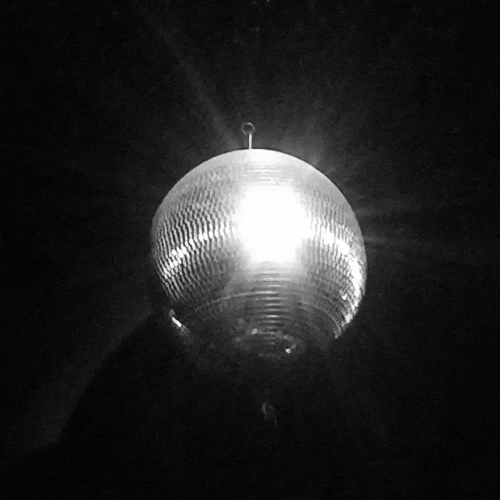
In astronomy and celestial navigation, the hour angle is one of the coordinates used in the equatorial coordinate system to give the direction of a point on the celestial sphere. The hour angle of a point is the angle between two planes: one containing Earth's axis and the zenith (the meridian plane), and the other containing Earth's axis and the given point (the hour circle passing through the point).
The angle may be expressed as negative east of the meridian plane and positive west of the meridian plane, or as positive westward from 0° to 360°. The angle may be measured in degrees or in time, with 24h = 360° exactly.
In astronomy, hour angle is defined as the angular distance on the celestial sphere measured westward along the celestial equator from the meridian to the hour circle passing through a point.[1] It may be given in degrees, time, or rotations depending on the application.
In celestial navigation, the convention is to measure in degrees westward from the prime meridian(Greenwich hour angle, GHA), from the local meridian (local hour angle, LHA) or from the first point of Aries (sidereal hour angle, SHA).
The hour angle is paired with the declination to fully specify the location of a point on the celestial sphere in the equatorial coordinate system.[2]
https://en.wikipedia.org/wiki/Hour_angle
In astronomy, an epoch or reference epoch is a moment in time used as a reference point for some time-varying astronomical quantity. It is useful for the celestial coordinates or orbital elements of a celestial body, as they are subject to perturbations and vary with time.[1] These time-varying astronomical quantities might include, for example, the mean longitude or mean anomaly of a body, the node of its orbit relative to a reference plane, the direction of the apogee or aphelion of its orbit, or the size of the major axis of its orbit.
The main use of astronomical quantities specified in this way is to calculate other relevant parameters of motion, in order to predict future positions and velocities. The applied tools of the disciplines of celestial mechanics or its subfield orbital mechanics (for predicting orbital paths and positions for bodies in motion under the gravitational effects of other bodies) can be used to generate an ephemeris, a table of values giving the positions and velocities of astronomical objects in the sky at a given time or times.
Astronomical quantities can be specified in any of several ways, for example, as a polynomial function of the time-interval, with an epoch as a temporal point of origin (this is a common current way of using an epoch). Alternatively, the time-varying astronomical quantity can be expressed as a constant, equal to the measure that it had at the epoch, leaving its variation over time to be specified in some other way—for example, by a table, as was common during the 17th and 18th centuries.
The word epoch was often used in a different way in older astronomical literature, e.g. during the 18th century, in connection with astronomical tables. At that time, it was customary to denote as "epochs", not the standard date and time of origin for time-varying astronomical quantities, but rather the values at that date and time of those time-varying quantities themselves.[2] In accordance with that alternative historical usage, an expression such as 'correcting the epochs' would refer to the adjustment, usually by a small amount, of the values of the tabulated astronomical quantities applicable to a fixed standard date and time of reference (and not, as might be expected from current usage, to a change from one date and time of reference to a different date and time).
https://en.wikipedia.org/wiki/Epoch_(astronomy)

Earth's rotation or Earth's spin is the rotation of planet Earth around its own axis, as well as changes in the orientation of the rotation axis in space. Earth rotates eastward, in prograde motion. As viewed from the north pole star Polaris, Earth turns counterclockwise.
The North Pole, also known as the Geographic North Pole or Terrestrial North Pole, is the point in the Northern Hemisphere where Earth's axis of rotation meets its surface. This point is distinct from Earth's North Magnetic Pole. The South Pole is the other point where Earth's axis of rotation intersects its surface, in Antarctica.
Earth rotates once in about 24 hours with respect to the Sun, but once every 23 hours, 56 minutes, and 4 seconds with respect to other, distant, stars (see below). Earth's rotation is slowing slightly with time; thus, a day was shorter in the past. This is due to the tidal effects the Moon has on Earth's rotation. Atomic clocks show that a modern-day is longer by about 1.7 milliseconds than a century ago,[1] slowly increasing the rate at which UTC is adjusted by leap seconds. Analysis of historical astronomical records shows a slowing trend; the length of a day increased about 2.3 milliseconds per century since the 8th century BCE.[2] Scientists reported that in 2020 Earth has started spinning faster, after consistently slowing down in the decades before. Because of that, engineers worldwide are discussing a 'negative leap second' and other possible timekeeping measures.[3]
https://en.wikipedia.org/wiki/Earth%27s_rotation

An atomic clock is a clock whose timekeeping mechanism is based on the interaction of electromagnetic radiation with the excited states of certain atoms. Specifically, either a hyperfine transition in the microwaveregion, or an electron transition in the optical or ultraviolet region, of the emission spectrum of an atom is used as a frequency standard for the timekeeping element. Atomic clocks are the most accurate time and frequency standards known, and are used as primary standards for international time distribution services, to control the wave frequency of television broadcasts, and in global navigation satellite systems such as GPS.
The principle of operation of an atomic clock is based on atomic physics: it measures the electromagnetic signal that electrons in atoms emit when they change energy levels. Early atomic clocks were based on masers at room temperature. Since 2004, more accurate atomic clocks first cool the atoms to near absolute zero temperature by slowing them with lasers and probing them in atomic fountains in a microwave-filled cavity. An example of this is the NIST-F1 atomic clock, one of the national primary time and frequency standards of the United States.
The accuracy of an atomic clock depends on two factors:
- the temperature of the sample atoms—colder atoms move much more slowly, allowing longer probe times
- the frequency and intrinsic linewidth of the electronic or hyperfine transition. Higher frequencies and narrow lines increase the precision.
National standards agencies in many countries maintain a network of atomic clocks which are intercompared and kept synchronized to an accuracy of 10−9 seconds per day (approximately 1 part in 1014). These clocks collectively define a continuous and stable time scale, the International Atomic Time (TAI). For civil time, another time scale is disseminated, Coordinated Universal Time (UTC). UTC is derived from TAI but has added leap seconds from UT1, to account for variations in the rotation of the Earth with respect to the solar time.
https://en.wikipedia.org/wiki/Atomic_clock

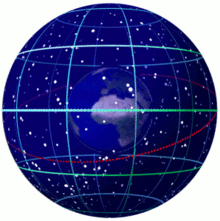

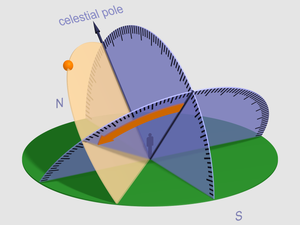

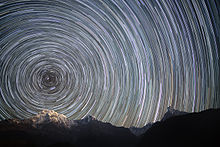
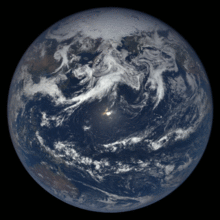
No comments:
Post a Comment